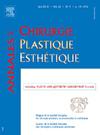Allotransplantations de tissus composites en France : mise au point
IF 0.5
4区 医学
Q4 SURGERY
引用次数: 0
Abstract
Les allotransplantations de tissus composites (ATC) regroupent les transplantations de face, de membre supérieur, de trachée, de pénis, de paroi abdominale et, plus récemment, d’utérus. Elles offrent des possibilités de reconstruction uniques pour pallier les limites des techniques traditionnelles de reconstruction. À la différence des greffes d’organes solides (cœur, foie, rein, poumon.), l’ATC n’intervient généralement pas en contexte de pronostic vital engagé mais vise à améliorer la qualité de la vie au prix d’une contrainte majeure freinant son expansion : la nécessité d’un traitement immunosuppresseur à vie. Cependant, l’ATC est considérée comme l’une des cinq innovations les plus importantes de l’ère moderne de la discipline, et une enquête mondiale menée auprès des plasticiens a confirmé que des changements majeurs dans la chirurgie réparatrice seront liés aux ATC à l’avenir. La France a été pionnière dans ce type de transplantation en réalisant avec succès la première ATC, la première double greffe de main, la première greffe de face, la première retransplantation de face et la première transplantation bilatérale au niveau de l’épaule et du bras et continue de démontrer des prouesses chirurgicales sans précédents. Cette activité continue de s’étendre sur le territoire avec des programmes d’ATC actifs, notamment dans les domaines des membres supérieures, de la face, de l’utérus et du pénis. Cet article vise à apporter une mise au point sur les avancées cliniques réalisés en France dans le domaine des allogreffes de tissus composites.
Vascularized composite allografts (VCA) encompass the face, upper limb, trachea, penis, abdominal wall, and, more recently, uterus transplants. They offer unique reconstructive possibilities to overcome the limitations of traditional reconstructive techniques. Unlike solid organ transplants (heart, liver, kidney, lung, etc.), VCA is not generally performed in a life-threatening situation but aims to improve quality of life, at the cost of a major constraint to its expansion: the need for lifelong immunosuppressive treatment. Nevertheless, VCA is considered one of the five most important innovations of the modern era of the discipline, and a worldwide survey of plastic surgeons has confirmed that significant changes in reconstructive surgery will be related to VCA in the future. France pioneered this type of transplantation by successfully performing the first VCA (unilateral hand transplant), the first double hand transplant, the first face transplant, the first face retransplant, and the first bilateral shoulder and arm transplant, and continues to demonstrate unprecedented surgical prowess. This activity continues to expand across the country, with active VCA programs notably in the upper limb, face, uterus and penis. This article aims to provide an update on the clinical advances made in France in the field of composite tissue allografts.
法国血管化复合同种异体移植:最新进展。
血管化复合同种异体移植(VCA)包括面部、上肢、气管、阴茎、腹壁,以及最近的子宫移植。它们提供了独特的重建可能性,克服了传统重建技术的局限性。与实体器官移植(心、肝、肾、肺等)不同,VCA通常不是在危及生命的情况下进行,而是旨在改善生活质量,代价是其扩展的一个主要限制:需要终身免疫抑制治疗。尽管如此,VCA被认为是该学科现代最重要的五大创新之一,一项全球整形外科医生调查证实,未来重建手术的重大变化将与VCA有关。法国是这类移植的先驱,成功实施了第一例单侧手移植、第一例双手移植、第一例面部移植、第一例面部再移植、第一例双侧肩膀和手臂移植,并继续展示前所未有的外科技术。这项活动继续在全国范围内扩展,特别是在上肢、面部、子宫和阴茎上有活跃的VCA项目。本文旨在提供法国在同种异体复合组织移植领域的最新临床进展。
本文章由计算机程序翻译,如有差异,请以英文原文为准。
求助全文
约1分钟内获得全文
求助全文
来源期刊
CiteScore
1.00
自引率
0.00%
发文量
86
审稿时长
44 days
期刊介绍:
Qu''elle soit réparatrice après un traumatisme, pratiquée à la suite d''une malformation ou motivée par la gêne psychologique dans la vie du patient, la chirurgie plastique et esthétique touche toutes les parties du corps humain et concerne une large communauté de chirurgiens spécialisés.
Organe de la Société française de chirurgie plastique reconstructrice et esthétique, la revue publie 6 fois par an des éditoriaux, des mémoires originaux, des notes techniques, des faits cliniques, des actualités chirurgicales, des revues générales, des notes brèves, des lettres à la rédaction.
Sont également présentés des analyses d''articles et d''ouvrages, des comptes rendus de colloques, des informations professionnelles et un agenda des manifestations de la spécialité.

 求助内容:
求助内容: 应助结果提醒方式:
应助结果提醒方式:


